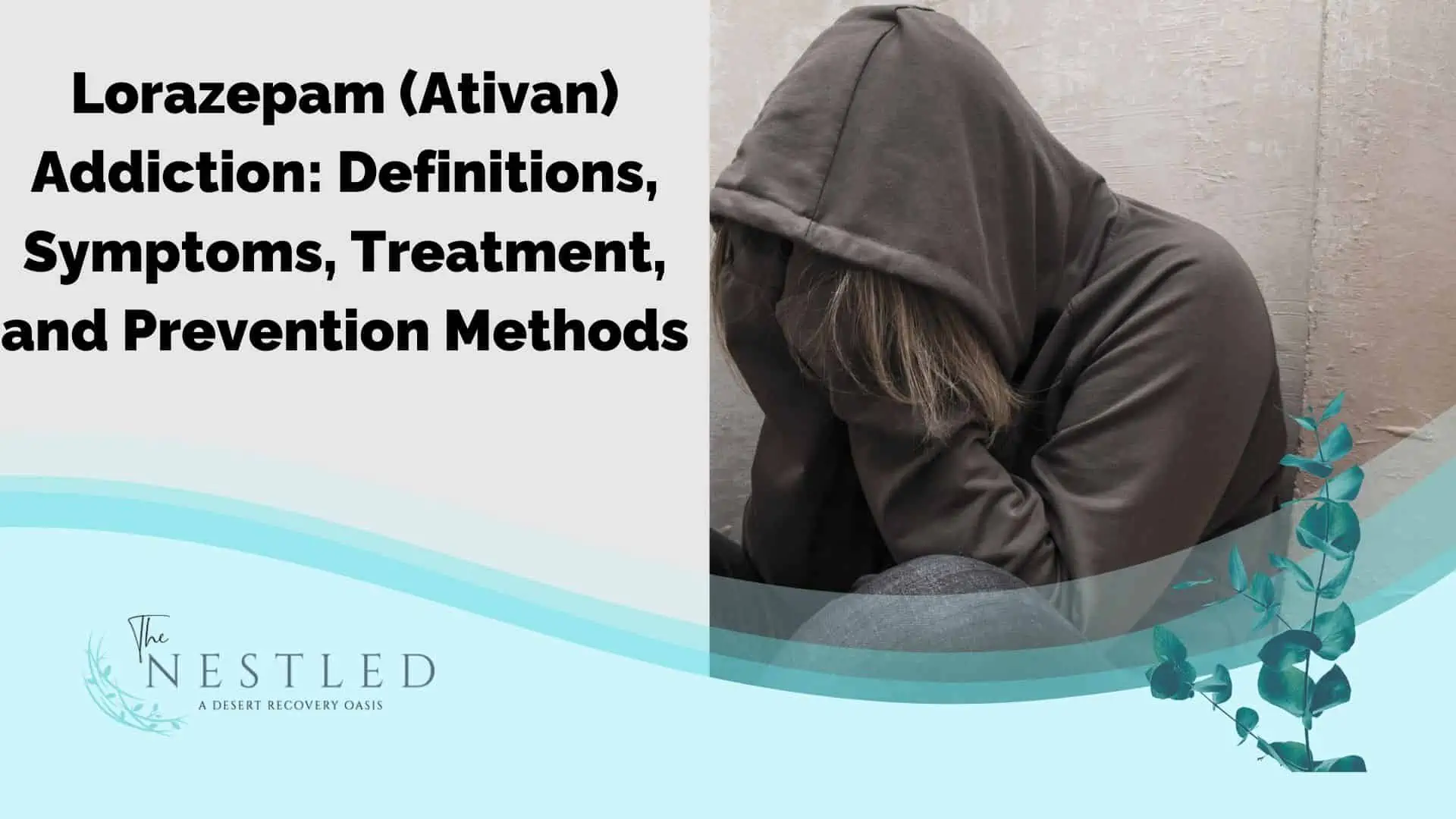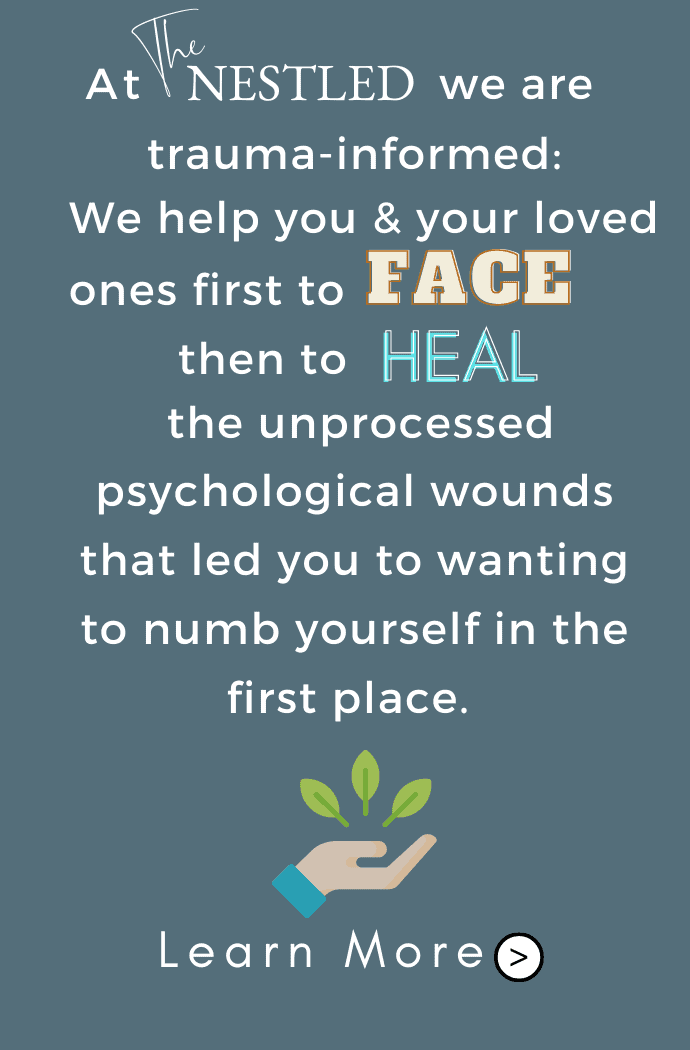Lorazepam addiction is the consistent abuse of the drug lorazepam or Ativan, not minding the negative effects it has on the user. Lorazepam addiction grips many with a dependency that disrupts lives and is classified as a substance use disorder by the DMS-5.
Symptoms of lorazepam addiction are both physical and psychological and range from slurred speech, ataxia, poor coordination, isolation, lying about usage, passing out, oversleeping, and doctor shopping.
Treatment of lorazepam addiction includes medically supervised detox, behavioral therapies such as Cognitive Behavioral Therapy, and ongoing aftercare to manage triggers and prevent relapse.
Prevention of lorazepam addiction involves massive education on the effects of Ativan addiction through seminars and online campaigns. Other methods involve strict application to the Ativan prescription and complete abstinence from the drug.
According to the Substance Abuse and Mental Health Services Administration’s 2015 National Survey on Drug Use and Health (NSDUH) research, 446,000 people of the age of 12 and older abuse sedatives, and 0.3 of this population has an ativan addiction.
What Is Lorazepam Addiction?
Lorazepam addiction is the acute dependency on the drug lorazepam or Ativan, neglecting all the negative effects it has on its users. At the heart of lorazepam addiction lies a two-pronged dependence:
- Physical
- Psychological.
Physical dependence: This refers to the body’s adaptation to the drug. Over time, the body needs more Lorazepam to function normally, resulting in tolerance. There is an increased chance of dependency even when the drug is taken as prescribed. Stopping its use results in withdrawal symptoms, a sign of physical dependence.
According to Olfson and Schoenbaum’s 2015 ‘Benzodiazepine Use in the United States JAMA Psychiatry’, approximately 75 million prescriptions for BZDs were written in the United States in 2008.
Psychological dependence is marked by:
- Cravings for lorazepam
- Continued use despite causing issues with responsibilities or social relationships
- Over time, the drug starts to take precedence over other activities and obligations, leading to a neglect of personal, professional, and social responsibilities.
The Diagnostic and Statistical Manual Of Mental Disorders (DSM) outlines 11 criteria for substance use disorders, which help professionals diagnose the severity of a Lorazepam use disorder.
What Are The Warning Signs Of Lorazepam Addiction?
One of the warning signs of lorazepam addiction is tolerance to the drug. Potential addicts need to consume more of the drug to achieve the desired effects. Here are other warning signs of lorazepam addiction;
- Withdrawal symptoms
- Headache
- Anxiety
- Muscle tension
- Seizures
These signs often begin quickly, sometimes within a week, emphasizing the drug’s potential for dependence. Interestingly, physical dependence on Lorazepam often means the onset of addiction. It often develops even in individuals who take Lorazepam as prescribed, without the compulsive misuse characteristic of addiction.
Why Is Lorazepam Addictive?
Lorazepam is so addictive because of its potent action as a benzodiazepine. Lorazepam works by blocking the neurotransmitter GABA to slow hyperactive mental processes, leading to a state of calm. This calm state increases the risk of physical and psychological dependence, making Lorazepam highly addictive. Habitual users develop a tolerance, requiring more of the drug to produce the same effects.
The risk of addiction increases with the dosage and duration of lorazepam use, mainly when used without a medical prescription or in higher doses than recommended. Individuals who have a history of drug and/or alcohol abuse or untreated mental health disorders are more susceptible to developing an addiction to Lorazepam.
The legal status of Ativan as a prescription drug often leads to an underestimation of its potential for abuse, especially when it comes to prescription drugs. Withdrawal symptoms from Lorazepam make quitting difficult, reinforcing the addiction cycle.
What Are The Symptoms Of Lorazepam Addiction?
Recognizing the signs of lorazepam addiction is the first step toward recovery. To find a solution, one must first identify the problem. The following are the symptoms of Lorazepam addiction:
Physical Signs Of Lorazepam Addiction
- Physical dependence on Lorazepam
- Withdrawal symptoms when the drug is stopped suddenly
- slurred speech
- Ataxia
- poor coordination, similar to alcohol intoxication
- loss of appetite
- Headaches
- Tremors
- Sweating
- Confusion
- Hallucinations
- Nausea
- Vomiting
- dizziness.
Behavioral signs of lorazepam addiction
- Using Lorazepam as a coping mechanism
- Legal problems
- Isolation
- Lying about usage
- Passing out
- Oversleeping
- Doctor shopping
Continued use of Lorazepam despite it causing problems in responsibilities or social relationships is a sign of addiction. The severity of lorazepam addiction is accessible using the 11 criteria outlined in the Diagnostic and Statistical Manual Of Mental Disorders (DSM).
Can I Overcome Lorazepam Addiction?
Yes, you can overcome lorazepam addiction. Numerous personal accounts of individuals who have successfully overcome benzodiazepine dependence and withdrawal syndrome are testament to this.
Overcoming lorazepam addiction involves gradual tapering of the drug, supportive medical care, and the use of alternative medications to aid the process. Psychological support, including therapy, peer support groups, and personal determination, also play a crucial role in overcoming lorazepam addiction.
The addiction recovery process is challenging and involves a variety of withdrawal symptoms. However, many have found that perseverance and the right support lead to successful cessation of lorazepam use. Recovery from lorazepam addiction is typically a gradual process that can take several months, and individuals often find that symptoms diminish over time as their bodies adjust to the absence of the drug.
Personal stories of recovery often highlight the importance of faith, lifestyle changes, and seeking help from professionals who understand benzodiazepine withdrawal.
What Are The Effects Of Lorazepam Addiction?
Lorazepam is a medication for anxiety disorder, but improper use leads to addiction, especially after an extended period of abuse, and its effects are not good. The following are the effects of Lorazepam addiction on its users:
- Physical dependence: Constant and consistent use of Lorazepam leads to physical dependency on the drug. An abrupt cut from Lorazepam leads to withdrawal symptoms that include insomnia, nausea, vomiting, anxiety, tremors, sweating, hallucinations, and seizures.
- Tolerance: lorazepam addicts develop tolerance to the drug and need higher doses to get the same effect that smaller doses used to give. This increase in dosage increases the risk of addict overdose.
- Psychological dependence: Lorazepam produces a calming effect, making individuals feel the need for the drug to cope with stress and daily life.
- Behavioral changes: addiction to Lorazepam causes behavioral changes like neglecting responsibilities, secrecy about drug use, desperate need for money, and social withdrawal.
- Overdose: lorazepam addiction, especially when taken with other alcohol and opioids, increases the risk of overdose.
- Legal and social impact: lorazepam addiction increases the risk of arrests for illegal possession and puts a huge financial strain on the user.
- Health consequences: lorazepam addiction has adverse effects on the respiratory and cardiovascular systems. It also increases the risk of liver damage and infectious diseases.
Lorazepam addiction also increases the risk of brain and cognitive damage that often results in;
- Motor coordination issues
- Psychomotor speed issues
- Executive function issues
- Sensory processing issues
- Episodic memory issues
- Concentration issues
- Memory issues
- Mental confusion
- Decreased IQ
- Processing speed
- Vsuospatial and visuomotor abilities, with some not regaining full cognitive functioning after discontinuation.
Certain patient populations, such as elderly patients and those on higher doses or using other medications, are at a higher risk of experiencing profound cognitive impairment from long-term use of Lorazepam.
According to Jones and McAninch’s 2015 study, ‘Emergency department visits and overdose deaths from combined use of opioids and benzodiazepines’, Opioids and BZDs are the two most prevalent classes of prescription drugs involved in overdose deaths
CNS depression is another severe consequence of long-term lorazepam addiction, with symptoms including drowsiness, lethargy, and dangerously slowed breathing, especially when combined with other CNS depressants.
Prolonged misuse of Ativan increases the risks of underlying mental health issues, including anxiety disorders, potentially leading to increased anxiety and depression, with patients possibly using more of the drug to self-medicate.
Signs And Symptoms Of Lorazepam Overdose
In the throes of Ativan or lorazepam misuse, an overdose is a real and dangerous risk. Here are the signs and symptoms of Ativan overdose:
- severe drowsiness
- confusion
- muscle weakness
- loss of balance or coordination
- light-headedness
- fainting
Mixing Ativan with other drugs significantly increases the risk of overdose and related complications such as excessive sedation and unconsciousness.
The combination of Ativan with Methadone, for instance, carries a lethal overdose risk due to respiratory failure. Immediate medical intervention is critical in cases of Ativan overdose, particularly when there is polysubstance use.
What Are The Treatment Options For Lorazepam Addiction
While the road to recovery may be challenging, comprehensive treatment options for Lorazepam addiction exist. The first step is medical detox.
Medical Detox
Medical detox is carried out under the supervision of licensed rehab facilities. It involves treating the user with medications to flush the Ativan from the body system. Following detox, individuals typically transition to a treatment program or are referred to a rehab center for continued care.
Therapy Options Post-Detox
Once the detox process is complete, the therapeutic phase begins. Among the multitude of therapy options, Cognitive Behavioral Therapy (CBT) has been shown to significantly increase abstention success from benzodiazepine addiction.
Another form of CBT, Acceptance and Commitment Therapy (ACT), helps with adherence to addict withdrawal programs and aims to reduce relapse by promoting acceptance and commitment to value-driven actions.
Motivational Interviewing (MI) is another approach used to enhance intrinsic motivation toward sobriety in addicts, specifically aiding those who have previously relapsed or struggled with other therapies.
After completing inpatient treatment, ongoing therapy or mental health services, such as outpatient services, are crucial for addressing mental health issues and establishing relapse prevention strategies.
Aftercare And Relapse Prevention
The lorazepam addiction recovery journey doesn’t end with the completion of treatment. Aftercare plans consist of tailored activities and resources that aid addicts in managing triggers, stress, and cravings after treatment concludes.
The initial months following treatment are critical as the risk of relapse is high. Engagement in aftercare for at least one year post-treatment is widely advised, with a suggestion of longer follow-up care for adolescents. Support networks integral to lorazepam addiction aftercare include:
- Alumni programs
- Sober living environments
- Recovery meetings
- The active participation of family, friends, and sponsors in the continued sobriety process.
What are the potential interactions and risks when individuals concurrently use lorazepam and cocaine?
When individuals concurrently use lorazepam and cocaine, they face several potential interactions and risks due to the combined effects of these substances. Lorazepam, a benzodiazepine, acts as a central nervous system depressant, while cocaine is a stimulant that increases heart rate, blood pressure, and alertness. Combining these substances can result in contradictory effects on the body, leading to a heightened risk of cardiovascular complications such as irregular heart rhythms, heart attacks, and strokes.
Is Lorazepam An Opioid?
No, lorazepam is not an opioid. It belongs to a group of drugs called benzodiazepines, which have different effects from opioids.
What Are The Mental Effects Of Lorazepam?
The mental effects of Lorazepam include agitation, irritability, violent behavior, confusion, restlessness, excitement, and increased talkativeness. If you experience any of these symptoms, it’s important to inform your doctor promptly.
What Happens If You Take Lorazepam Every Day?
Taking Lorazepam every day can lead to physical dependence and addiction, especially after 2 or more weeks of daily use.








